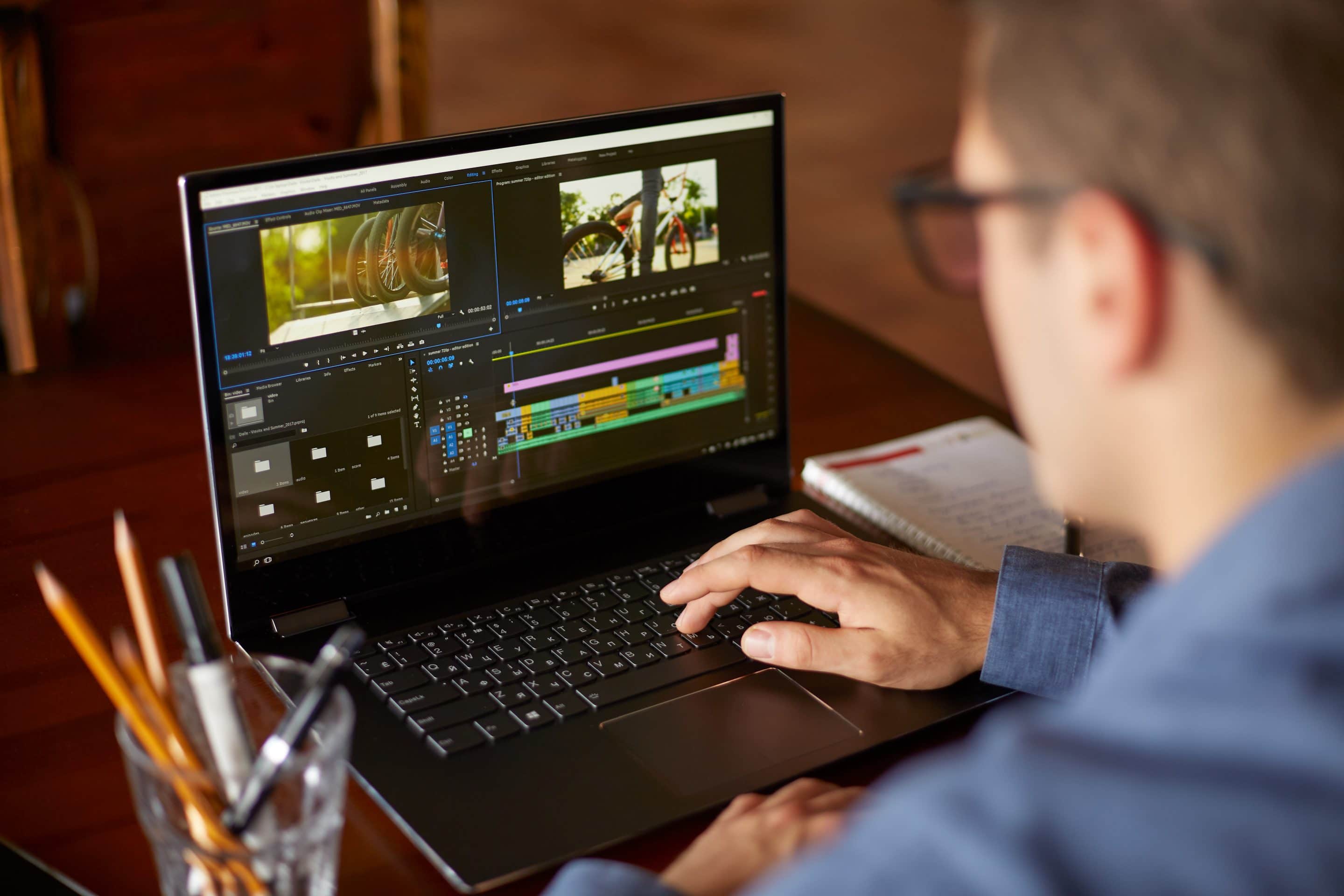To post successful social media content you create, it’s important to create a schedule that is subject to change during production and post-production. It’s important to create a roadmap to understand where you’re heading and what type of video will get there. When you’re happy with your plan, decide on the purpose of your video – whether you want to advertise, market your products and services, make an announcement, or simply introduce your brand.
It’s important to connect with the viewer, so put the viewer at the center throughout the thought process. Before you start editing your videos using a professional Video Maker for a social media strategy, you must consider the following:
- When shooting, don’t rely on post-production video editing to fix the problem. Post-production is for improvement, not for correction
- Shoot more video than you need. It’s always better to have extra content
- When using the mobile phone camera, shoot horizontally (do not shoot vertically).
- Use an external microphone for clear audio
- Stabilize the camera. Ideally, use a tripod or gimbal stabilizer on your cell phone to reduce movement
- Make sure the video has enough natural light
- View the entire record
- Make sure the background does not interfere with the foreground focus
How To Create And Edit Awesome Videos For Social Media Platforms
One of the most important tasks in video editing for social media marketing is optimizing your video for the platform on which you plan to publish it.
For example, Instagram allows videos, but it’s a completely different size than YouTube and Facebook. Instagram videos take less than 60 seconds when posted to the main feed, but 10 minutes on IGTV. On the IGTV, the size flips from the standard 16: 9 ratio to 9:16. This means that most videos are not properly formatted.
This means that if you want to post a video to both areas of Instagram, you need to create two video files (one for each aspect ratio). You only need to use vertical video for IGTV or stories, so you can easily achieve this by recording the video vertically and then recording it horizontally again.
Before you start the video editing process with an effective Video Maker, you can decide which social media channel you plan to use, explore the specific dimensions recommended by your site, and respond appropriately to everything you need. It is recommended to do so. When you’re done shooting, collect all available assets and record more video than you think you’ll need.
Important Elements To Consider While Editing Videos For Social Media Videos
- If you want to use color graphics in your video, find it using complementary colors. For example, blue is the complementary color of yellow and green is the complementary color of red. With complementary colors, you can make your video stand out and get the viewer’s attention in an eye-friendly way.
- You can also use the color correction tools to edit the colors used in the video.
- Finally, end each video with a CTA that contains company information such as website addresses and phone numbers, and other resources you want your viewers to access.
- Another important element of a successful social media video is effective eye-catching graphics or music. The public’s attention is shorter than ever. If you can’t capture them in the first 10 seconds of the video, they can be lost. Video editing is a tool, not a solution. With the same idea, we get to the point when it comes to video editing. Do not add unnecessary slides or additional information if your audience does not need it.
Tips for Enhancing Your Social Media Videos
You can’t take bad raw footage and turn it into properly edited footage. You must:
1. Include Subtitles When Editing Video
It is important to use subtitles when editing the video. This process can be very tedious, but it has enormous benefits. Most videos are watched while the viewer is at work, so captions make it easy to watch videos even when the audio is off. Subtitles will also be available to the hearing impaired. Adding captions also has a positive effect on SEO. Videos with subtitles tend to be ranked higher in Google search results, increasing engagement and increasing search traffic. Captions are for videos such as meta descriptions, and keywords are for websites. Also, do not use the built-in caption program on public video sites such as YouTube.
2. Use Effective Audio Editing Skills
Audio is one of the most significant factors in making a successful video for social media platforms. Use effective software that is especially useful when recording audio and video separately, as the audio and video need to be synchronized to be the same. For audio editing, the main volume (audio or dialog) should bounce between 12 and 0 in the level bar. For secondary audio (music or effects), keep it in the range 20-12.
3. The Length of the Video
Keep Your Video’s Length precise, concise, and to the point. It’s best to edit it to a minute or less for social media sites like Instagram, Twitter, Facebook, and LinkedIn, and a maximum of 10 minutes long for YouTube or IGTV.
4. Use Transitions Efficiently (don’t overuse)
Most commonly, cuts to fade to blacks, and dissolve transitions are used to ensure video flow and serve a specific purpose, or if the video message requires more artistic options. Whenever you edit a video, be sure to edit the action to see the progress of the scene. That said, you don’t have to cut between too many shots in a social media video. Due to the accessibility and ease of creation of modern videos, social media users are often content with short, simple videos that are quick and easy to watch.
5. Remember the CTA When Editing the Video
End the video with a powerful statement that the viewer remembers. Whether you’re soliciting a product purchase, giving an incentive to visit a website to find out more, or an invitation to schedule a consultation, conclude your video with a powerful, clear-cut phrase to watch.
Conclusion
When making videos, remember to accept the ideas and constructive criticisms of others. If you spend a lot of time editing a video, it will be easier to feel attached to it, especially when posting your content on social media platforms. Depending on the purpose of your social media videos, edit the central message of the video and ensure the best final video is created with elaborate creations and edits. The goal is to sketch each shot to see how directors, camera operators, and editors can help organize the video.


